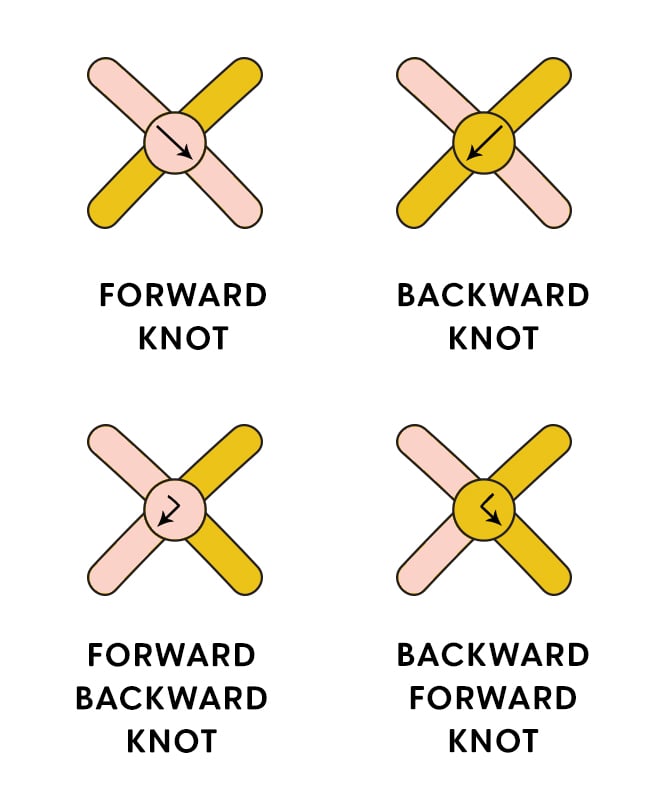
Making friendship bracelets is a simpleton craft that is amazingly playfulness to do. Once you learn how to make the four basic friendship watchband knots, there ’ s no restrict to the beautiful patterns you can create !
There is a apparently endless add of friendship bracelet patterns available on the internet. Stripes, chevrons, hearts, arrows – whatever blueprint you can think of, you can find !

Where to Find Patterns
My front-runner place to look for patterns is a web site called BraceletBook. Another great site with friendship bracelet patterns is friendship-bracelets.net.
Looking for even more design inspiration ? For beginners, I ’ ve rounded up a solicitation of the best easy friendship bracelet patterns. For more have watchband makers, I ’ ve collected an perplex number of advanced friendship bracelet patterns, besides .
once you learn to read friendship bracelet patterns, you ’ ll be able to make any invention you come across .
Types of Friendship Bracelet Patterns
You may already know that there are a few different types of friendship watchband patterns. hera are the two chief types .
- Normal patterns are the most well-known type of pattern. You’ll know your pattern is a “normal” type pattern when the knots move in a diagonal direction. The charts for normal patterns look like diagonal grids.
- Alpha patterns are another type of friendship bracelet pattern with horizontally tied knots. Alpha patterns are often used to make designs with letters or simple images. The charts for Alpha patterns look like a grid.
This article will focus on teaching you how to read normal patterns .
For more information about how to make an alpha radiation pattern watchband, check out this article : How to Read Alpha Bracelet Patterns .
Parts of a Friendship Bracelet Pattern
Pattern preview image. The practice chart will normally include a little preview double at the top of the chart. This will show you how your friendship watchband will look when you have completed the project. The colors in the preview image correspond to the colors in the chart. You may change the colors, or the order of the colors, as you wish .
 Pattern image generated with Braceletbook.com
Pattern image generated with Braceletbook.com
Strings. Across the top of the chart, you will see a act of strings, labeled with letters. The convention will use one letter for each color .
If there are two strings of color “ A ”, you will see the letter “ A ” used to label two of the strings .
Let ’ s say that they letters across the top learn “ ABCDDCBA ”. This means that you will start your bracelet with two strings of tinge A, two strings of color B, two strings of tinge C, and two strings of color D in the order specified .
Rows. On the sides of the chart, you will see number lines. These numbers indicate the rows of the model .
authoritative note : Some bracelet patterns have an even issue of strings, and some have an odd number of strings. For bracelets with an even number of strings, you will see that odd-numbered rows have knots for each pair strings. Even-numbered rows have one less knot – the two outer strings are not used to tie any knots in the rowing .
Knot Symbols. The circles at the intersections of the strings represent the knots. The arrows indicate the character or direction of each knot .
The bent “ elbows ” at the outer edges of even-numbered rows indicate that the two out strings are not used .
Pattern Repeat. The pattern chart normally includes one full moon repeat on the design. When you reach the end of the chart, the strings should be lined up in the correct order so that you can start the chart over again. You will likely need to make many repeats of the pattern to make a finished watchband .
Review of Basic Friendship Bracelet Knots
There are four basic types of friendship bracelet knots .
- Forward Knot
- Backward Knot
- Forward-Backward Knot
- Backward-Forward Knot

Each of the four knots is composed of two half knots – called hitches. The four basic friendship watchband knots use two hitches stacked together in unlike combinations .
Forwards knot : advancing hitchhike + advancing hitchhike
Backward knot : back hitchhike + back hitch
Read more: 15 Mystery Series That’ll Keep You Guessing
Forward-Backward knot : forth arrest + backward limp
Backward-Forward knot : backward hitch + forward enlistment
For a full moon explanation of the different types of friendship bracelets knots, with lots of diagrams and pictures, be certain to read How to Tie the 4 Basic Friendship Bracelet Knots .

How to Read a Friendship Bracelet Pattern
After you ’ ve chosen a watchband blueprint and selected your string colors, it ’ second clock time to start making your project .
- Cut about 36″ of embroidery floss for each strand. You can also cut 72″ of floss and fold it in half to create two strands of the same color.
- Tie all of the strands together with a simple overhand knot. Leave about a 3-4″ tail.
- Secure the tail of the bracelet to a tabletop with masking tape, clip the tail of the bracelet in a clipboard. You can also use a safety pin to secure the knot to your jeans.
- Arrange the strings in the color order indicated by the letters at the top of the pattern.
- Working one row at a time, make the knots as indicated by the circled arrows. Let’s say you were making the pattern example in this post. Starting with Row 1, you would make a forward knot, a forward knot, a backward knot, and a backward knot.
- Move on to Row 2. This is an even-numbered row, so you won’t use the outer two strands. If you were making the pattern example in this post, you would make a forward knot, a forward knot, and a backward knot.
- Continue along each row, repeating the pattern chart as many times as necessary.
- When the bracelet is as long as you’d like, tie all of the strings together with another overhand knot. Leave a longer tail so that you will be able to tie the bracelet on to your wrist.
And there you go ! You ’ ve learned how to read friendship bracelet chart patterns .
What’s Next?
Pin this post: Save this tutorial to your Pinterest boards therefore that you can come back to it late .
Leave a comment: I love to hear your feedback. Tell me in the comments below !
Share on Instagram or Facebook: When you make this stick out, plowshare it on social media and tag me @ sarahmaker. I love to see what you make !
 Sarah Stearns has helped thousands of makers find their future craft project with detached patterns and bit-by-bit tutorials on her blog, sarahmaker.com. Read more .
Sarah Stearns has helped thousands of makers find their future craft project with detached patterns and bit-by-bit tutorials on her blog, sarahmaker.com. Read more .
Her work has been featured in Scientific American, Good Housekeeping, Vox, Apartment Therapy, and more .
shares
Read more: 15 Mystery Series That’ll Keep You Guessing


